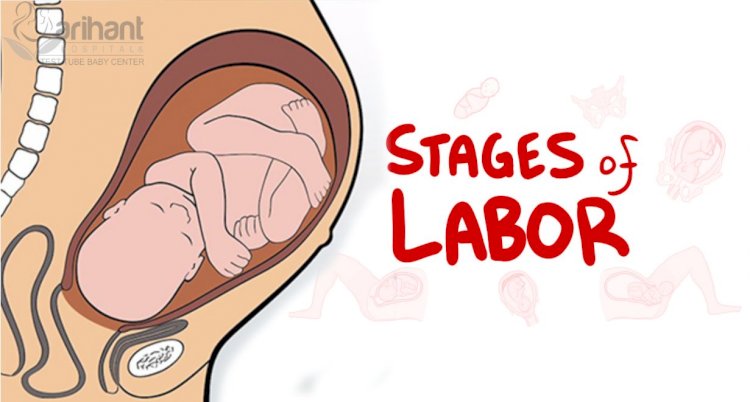The Stages of Labor and Birth in a Vaginal Delivery

The stages of labor and birth in a vaginal delivery
For any expecting mother, it becomes much difficult to remain patient after crossing nine months rollercoaster journey of pregnancy. However, last stage is very crucial as you have to bear unwanted labor pains to see your baby. If, in case position of your baby is favorable and normal then you will have a vaginal delivery.
To understand more better vaginal or normal delivery is divided into different stages of labor. Labor basically includes contractions commonly known as labor pains which you have to go through before delivering your baby and pain continues till delivery. This process is divided into three stages and for any expectant mother it is important to know about the labor process and delivery such that different stages can be dealt with ease.
There are many symptoms and signs of labor which will help you in knowing that whether labor has started or is about to start. Some common symptoms include diarrhea, bloody show, lightening, contractions, water break down and unbearable backache.
Different stages of labor in a vaginal delivery
 Stage 1- The first and foremost stage of labor is divided into three different phases which are active, latent and transition.
Stage 1- The first and foremost stage of labor is divided into three different phases which are active, latent and transition.
Latent phase is least intense and longest phase of labor. In this phase, contractions become frequent that help your cervix to dilate such that your baby can go through the birth canal.
Discomfort in this stage is less or minimal. This phase is also known as early phase or prelabor. In this phase there will come sometime when you will not realize very early contractions and even find cervix dilated several centimeters when you will reach a hospital. While on other hand, some expectant will also face painful contractions from the very beginning. Expectant mothers must know that as soon as cervix starts dilating, a position of cervix in pelvis also starts changing and in most cases, it starts moving forward gradually and softens.
During active phase cervix begins to dilate faster. You will even feel pressure in back or intense pain in abdomen with each contraction. You will also feel to bear down or push, but most of the doctors ask to wait till cervix opens completely. The second phase is characterized by descent of presenting fetal part and rapid cervical dilation. In this phase, position of your baby will be checked as some babies might need extra attention and help to come at the right position. This helps in keeping labor steady and progressing.
In transition phase, cervix dilates fully to 10cm. Contractions are very frequent and painful coming in every four to five minutes and lasting from 60 to 90 seconds.
Stage 2 - The second stage begins when cervix dilates fully at 10cm. This stage continues till baby passes through vagina, birth canal and is born. This stage mostly last up to two hours or more. Contractions are much different from first stage and will slow to maximum 5 minutes and last for about 60 to 90 seconds. You will feel urge to push, but try to rest as much as possible between intervals of pushing and always push only when your doctor will tell you.
You may receive episiotomy or pain relieving medicines if felt need while pushing. Episiotomy is basically a procedure in which small incision is made between vagina and anus to enlarge vaginal opening. It is even used to assist baby out quickly and to prevent irregular and large tears of vaginal wall.
Stage 3 - The third stage starts once the baby is pulled out or when you deliver placenta. You will feel less intense contractions which usually causes you detach placenta from wall of the uterus and drop down into the bottom of the uterus.
You will have an urge for pushing after which membrane of an empty bag of the vagina along with placenta come out. This process will take somewhere around 15 minutes, but it can extend up to one hour depending on whether you have a natural delivery or have gone through an operation.
After all this, your body starts stabilizing and baby also starts adjusting life outside the womb. You will be kept under keen observation so as to ensure that there will be no complications like difficulty in passing urine, bleeding, backache and swelling of episiotomy wound.



































Comments (0)